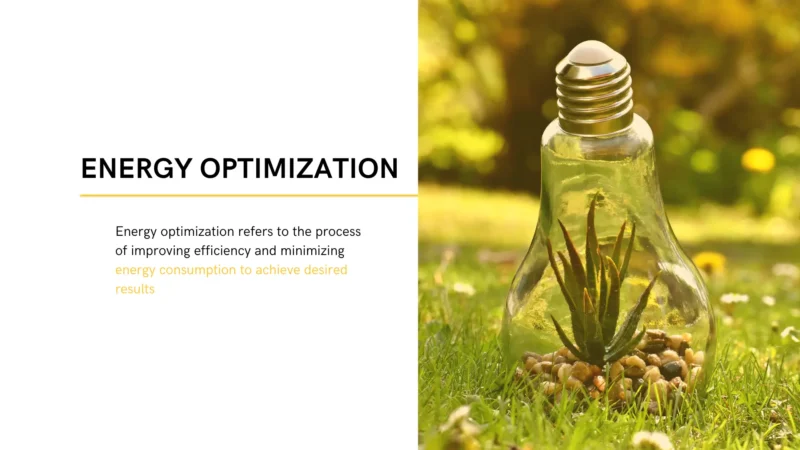Greetings, fellow Nawala! May you always be in good health.
This is the IAES Nawala from the Institute of Advanced Engineering and Science. Today we will share some news about energy optimization. Energy optimization refers to the process of improving efficiency and minimizing energy consumption to achieve desired results. Patil and Bhavikatti (2023) presented a graph-based energy-optimized dynamic routing (GEODR) mechanism for energy-efficient routing in wireless sensor networks (WSNs). This mechanism improves energy efficiency using graph theory-based clustering, cluster head (CH) selection based on residual energy and distance, and sink node mobility. The results show significant improvements in energy efficiency, with models for routing, cluster formation, and optimization discussed.
Energy aware optimized dynamic routing mechanism in wireless sensor networks
Geeta Patil, Arvind Mallikarjun Bhavikatti
A trade-off between energy efficiency and optimized routing is massively recommended for transmission efficiency enhancement in wireless sensor networks (WSNs). Therefore, in this paper, graph-based energy optimized dynamic routing (GEODR) mechanism is introduced to set up a balance between energy consumption minimization and throughput enhancement using a dynamic and optimized routing mechanism in WSNs. A clustering scheme is employed based on graph theory, and cluster boundaries are formed using distance vectors. Cluster head (CH) selection is performed based on residual energy, the distance between CHs, and the mobility of the sink node. Each cluster is scattered with multiple tiny nodes, and event monitoring is performed. A model for graph-based dynamic routing to transmit data packets, cluster and cluster boundary formation, and optimization of routing problems is discussed. The performance efficiency of the proposed GEODR mechanism is determined by taking 100 sensor nodes, and 20 nodes are selected as CHs in a sensor network, and several other network parameters are also considered. A massive improvement in energy is observed by using sink node mobility. Experimental results are obtained using the proposed GEODR mechanism in terms of data packet transmission, alive nodes, dead nodes, and residual energy and compared against classical routing mechanisms such as low energy adaptive clustering hierarchy (LEACH) and stable election protocol (SEP).
Hilmani et al. (2023) present an energy-efficient routing protocol for WSNs in smart parking systems. The protocol uses progressive and concentric cluster formation approaches to balance energy consumption, improve data transmission reliability, and extend network lifetime. Simulation results demonstrate the effectiveness of the protocol.
Adil Hilmani, Mohamed Koundi, Yassine Sabri, Abderrahim Maizate
Smart parking is common in contemporary cities. These smart parking lots are outfitted mostly with wireless sensor networks (WSNs), which are used to detect, monitor, and collect data on the availability status of all existing parking spaces in a given area. Sensors make up WSN, which may gather, process, and transmit informations to the sink. However, the power and communication limitations of the sensors have an effect on the performance and quality of the WSNs. The decrease in the battery and the energy of the nodes causes a decrease in the life of the nodes and also of the entire WSN network. In this article, we present a routing protocol that implements an efficient and robust algorithm allowing the creation of clusters so that the base station can receive data from the entire WSN network. This protocol adopts a reliable and efficient algorithm allowing to minimize the energy dissipation of the sensors and to increase the lifetime of the WSN. In comparison to alternative parking lot management protocols already in use, the simulation results of the proposed protocol are effective and robust in terms of power consumption, data transmission reliability, and WSN network longevity.
In addition, Srikantha et al. (2023) proposed a routing model for sensor networks in the Internet of Things (IoT) context that aims to optimize energy efficiency and reliability. The proposed model uses a cluster-based approach, where nodes are grouped into clusters based on proximity and energy level. The selection of cluster heads (CHs) is done based on residual energy, distance between CHs, and mobility of sink nodes. The model also considers reliability factors that affect the quality of the relationship between nodes and the chosen routing path. Simulation results show that the model effectively saves energy and improves data transmission reliability, especially in network conditions that experience high traffic loads and interference. This paper includes a discussion of cluster-based routing models, CH selection, reliability factors, as well as potential applications for IoT.
Energy aware reliable routing model for sensor network enabled internet of things environment
Padmini Mysuru Srikantha, Sampath Kuzhalvaimozhi, Samaresh Mallikarjun Silli, Suraj Prakash, Tanay Verma, Varun Manjunatha
Wireless sensor networks (WSNs), which are facilitated by the internet of things (IoTs), can be difficult to improve the lifespan of the network target area. Although the hotspot issue (i.e., the cluster head closest to the base station fails quickly) is mitigated by the clustered-based routing technique, it still has an important effect on the network’s lifespan and target area. However, improper distribution of load between cluster heads has been shown to negatively impact network lifespan efficiency, so even though unequal clusters have been utilized successfully to tackle the hotspot issue, further work is needed. This study provides an energy-aware reliable routing (EARR) model for resolving the hotspot as well as load balancing issues simultaneously. To extend the lifespan of the network, the EARR model effectively minimizes energy consumption by the cluster heads using enhanced multi-objective optimization parameters. Further, EARR provides improved routing optimization metrics to improve data delivery with energy efficiency, less delay, and packet loss. The results of the experiments demonstrate that the EARR model provides excellent throughput and lifespan efficiency with low delay and communication overhead.
The above articles are a small part of the research on energy optimization. To get more information, readers can visit the page and read articles for FREE through the following links: https://ijeecs.iaescore.com/ and https://ijres.iaescore.com/.
By: I. Busthomi

